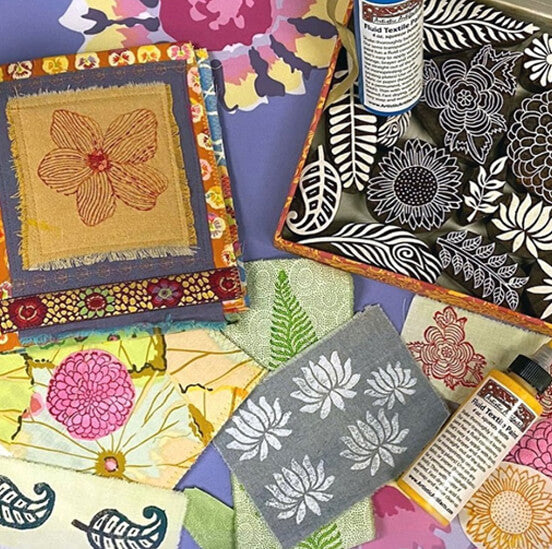How Do I Use This? Luminarte Product Tips from Our Monthly Demo Series
In 2014 we began a new series called How Do I Use This?, monthly product and technique demonstrations. Hosted by yours truly, ME!
This has been a great opportunity for me to get to know different products up close and personal, as well as a little experimentation and play time. The series has been received well and we’ve been delighted to welcome repeat students as well as new friends — last month we even welcomed a visitor from Texas, who was in town visiting her son!
Last month the weather postponed us from the original 2nd Thursday schedule, but we persevered and met the following week. The featured products were by Luminarte: their luscious Silks Acrylic Glazes and Twinkling H2Os.
Note: I’ve included additional information about how to “activate” and use H2Os at the end of this post.>

Above are three of my finished tags.
The Silks and H2Os can can be used alone, or together for even cooler effects. Both products contain high percentages of mica, which creates a shimmer to the finish.

Silks have a wonderful sheer, translucent quality. You can layer additional coats of the same color for opacity. The sheer quality is a big selling point, though: any color of the Silks can be painted over other another without creating a muddy mess. This Tag is a sample of how the colors interact when painted over. Colors stay true: you can still see the through to the layers underneath.

On the above tags I applied Silks through some of the great The Crafters Workshop (TCW) stencils.

This tag shows a purple shade of the Silks applied through a stencil. After the Silks dried, I washed a few shades of H2Os on the tag. The H2Os don’t cover the Silks, instead the Silks act as a resist for the H2Os

Another tag, Silks and H2Os with the added white pen, this one being our white Sharpie Water-Based Paint Marker: Extra Fine Point.

Silks have a nice thick consistency, so they don’t drip and thus also work with rubber stamps. For the above tag, I applied the silks with a sponge to a selected stamp and stamped the red butterfly over blue Silks and yellow H2Os. The black drawing was with Mix & Match Essential PITT Artist Pens from Faber-Castell. Shop all pens & markers now »

One of my goals with this series is to try these products on both paper and fabric, whether that is a published usage or not. What is art without experimentation? The sample above is Silks on muslin, through a stencil. I like the strong color! I do have to admit that it does feel like acrylic paint on fabric, meaning that it added a some stiffness to the fabric. And another disclaimer, I have not washed the sample nor stitched through the paint yet, so I’ll have to let you know how that goes.

This little sample above is the H2Os right out of the container onto the same muslin. The color will bleed a little, or a lot, depending on how much water you introduce to the paint.
Again a disclaimer: not washed or stitched yet.

My favorite test for this product was on a polygel printing plate. That evening we used a small gel printing plate, which accommodated two of the large manila shipping tags we were using next to each other perfectly! By placing the stencil on the Gelli plate then using a brayer to apply paint we create a wonderful background on the tag. Then you can print again by lifting the stencil to create the images below on fabric or paper.


I love these two prints on fabric! You should expect to see them in the future...
Using H2Os
As promised, here’s the scoop on activating and using H2Os: they arrive in a small plastic jar as a hardpan watercolor cake. Twinkling H2Os must be activated with water ahead of time so that they can be used. Here’s how: spritz well with water from spray bottle, then let water soak in 10-15 minutes (when you check your pots, it will look as if all the water has soaked in). Spritz the jars a second time and wait a couple more minutes. The paint should begin to soften, then mix into a creamy texture with your paintbrush. You should look for the consistency of honey, or pigment ink in a re-inker bottle, so add water if necessary.
Once they have rehydrated, then apply with a paintbrush, sponge or other painting tool, even your fingers! If you’d like a wash effect, scoop out a small amount with your brush and mix it with a larger amount of water in the jar lid, or on your craft sheet, etc.
Once you have opened and used a pot of Twinkling H2Os, make sure it is completely dry before you put the lid on. Mold can build up if moisture is trapped. In fact, many artists simply choose to store their colors without the lids at all. Doing so allows air to circulate, and once the H2Os dry, they are solid with no chance of dripping or spilling.







Leave a comment